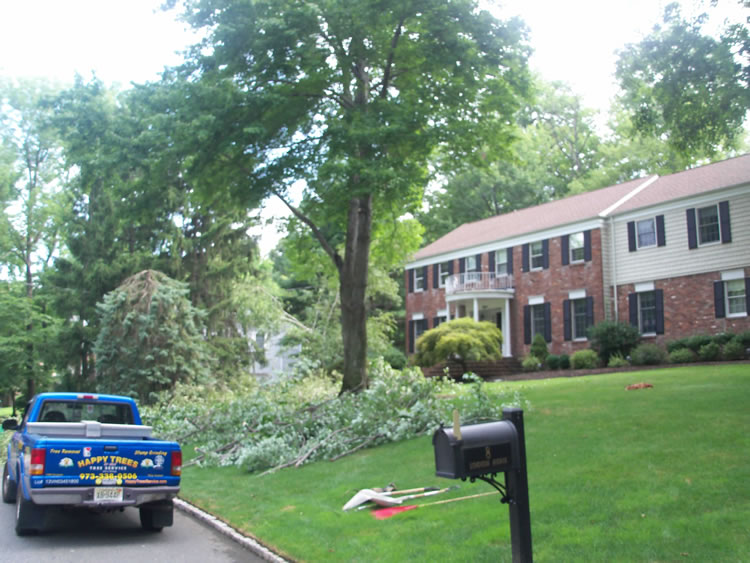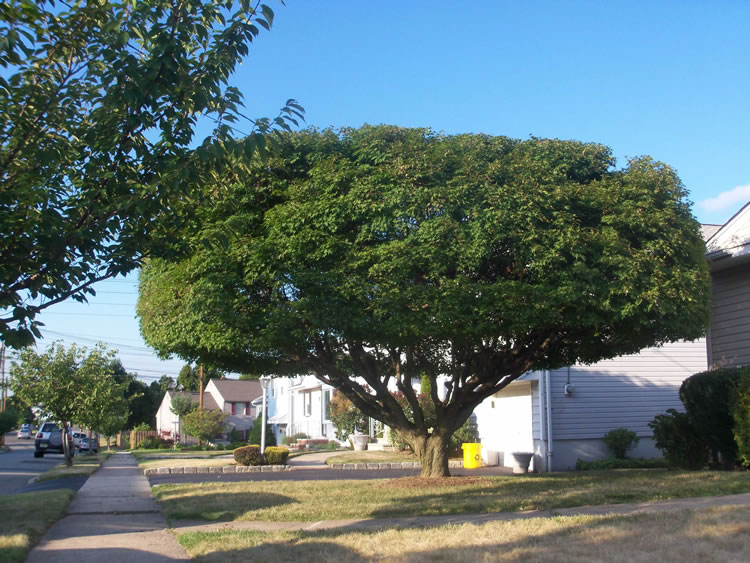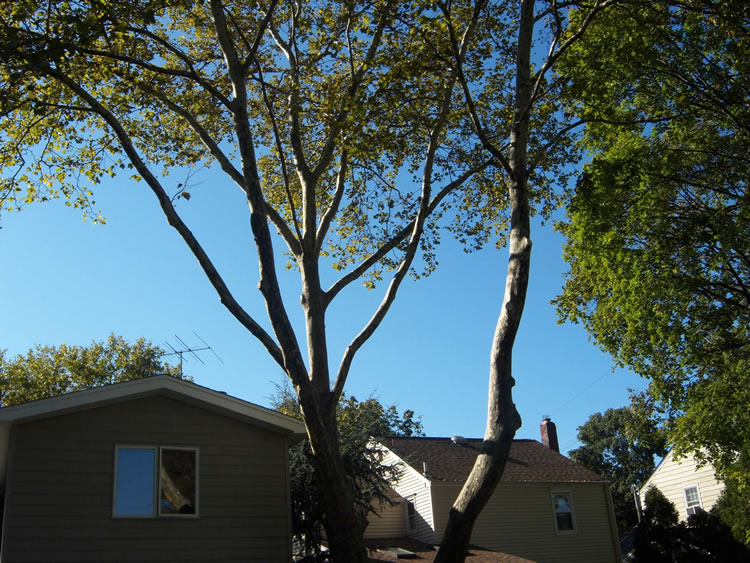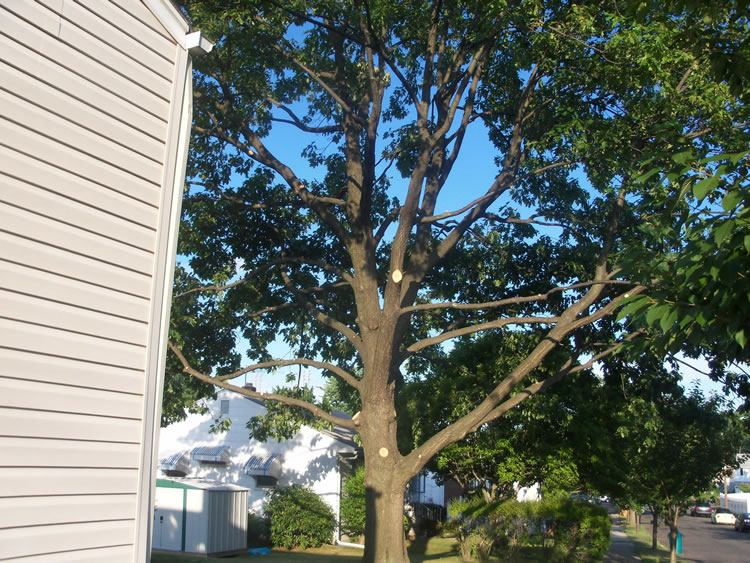Tree Trimming

There are many different reasons for tree trimming. Those include safety, aesthetics, clearance, fruit and flower production. At Happy Trees, we examine each tree individually and provide our clients with expert recommendations that will meet their tree trimming requirements. We also ensure that our solution will not impact the long term health of each tree.
Dead Wood Pruning
Branch and twig death (dead wood) can result from a variety of reasons. Those include various pests and diseases, the health decay of the tree’s root system, air and soil pollution, moisture content in the soil, and wind damage can all result in the accumulation of dead wood in a tree’s canopy. Most cases of dead wood results from the lack of sun exposure. Without sun, the leaves or needles on those branches and twigs cannot produce enough energy (through photosynthesis) to sustain themselves. Dead wood in a tree can be unsightly and, depending on the size of the dead wood, pose a danger to people or objects below. Whether you are looking to beautify your trees, safeguard your valuables, or both, our tree experts can efficiently and meticulously remove any dead wood infecting your trees.
&nbs;
View Pruning
Do you pay property tax on a view you are supposed to have? Are there trees or limbs blocking your million dollar view? Happy Trees can prune those obscuring limbs or remove those trees to maximize the value on your property and get you seeing your view. Not only will we help you claim back your view, we’ll put together recommendations to retaining it. Often times, instead of doing a crown reduction (or the dreadful word topping), in the long run it is better and more cost efficient to “window” trees. This is done by selectively removing branches in a tree’s interior to open up view windows. This type of pruning allows a view to be obtained, while still keeping the integrity of the tree intact. This in turn doesn’t shock the tree into putting up an immense amount of suckers and regrowth that will block your newly obtained view. Call Happy Trees to come out and work with you on the best way to get back and retain your view.
Fine Pruning
Fine pruning of your ornamental trees and shrubs should be handled by industry experts. One wrong cut by a well meaning landscaper or an over eager home owner can cause irreparable damage to a tree’s health and/or shape. Reasons for pruning your ornamental trees and shrubs can include the following:
- House Clearance
- Walkway and Driveway Clearance
- Taking out Crossing and Binding Limbs
- Removing the Unsightly Deadwood
- Thinning the Canopy
- Slightly reducing the overall size
Let Happy Trees handle your delicate pruning needs on your ornamental trees and shrubs.
Tree Shaping

Tree Shaping can include tree trimming, tree pruning and tree shaping. This investment in your trees can lead to substantial returns. Well cared for trees are attractive and add considerable value to your property. Appropriate pruning techniques are essential for development of strong tree structure and desirable form. Poorly maintained trees and/or the improper pruning of them can cause long lasting damage.
Tree Thinning

Thinning Thinning is important because it reduces wind resistance of the tree or of its larger branches by selectively thinning the canopy from the top down. If you have doubts about whether or not your trees should be thinned, have Happy Trees take a look.
If your home or valuables are surrounded by large trees, Thinning Out may be something to consider.
We offer wind sail reduction – a method of pruning in which the goal is to reduce wind resistance in a tree’s canopy. The idea is that by selectively reducing the number of branches within the canopy, wind will be able to pass through the tree and will not be blown over by the strong gusts that occasionally come to the northwest. Wind sail reduction is also a way to better safeguard large branches withing the canopy. By thinning some of the smaller branches and twigs off the larger branches, there will be less wind force applied to the individual branches, and allowing them to withstand the wind’s forces better.
Care has to be taken to remove the right amount of branches and foliage. Too little branch reduction will not produce the desired wind resistance reduction, but removal of too many branches and foliage may stress the tree. Correct wind sail reduction will remove 10% to 25% of branches and foliage. If a tree has dense foliage before wind sail reduction, the amount removed will be closer to 25%. If a tree has relatively sparse foliage, and wind reduction is still appropriate, only 10% or the live foliage would be removed. On these type of trees, removal of dead wood (Dead Wood Pruning) might be a better option than a wind sail reduction.
The tree experts at Happy Trees can help you make a decision on the best course of action for your trees’ health and the safety of your home.
Tree Elevation

Elevating consists of the removal, or trimming, of the lower limbs and branching to give the tree a taller appearance. During the bidding process, we typically use the term “elevate,” followed by a height in feet to determine the elevation of the tree. If the term “foliar” is used next to “elevate,” it means that a branch starts on the trunk below the designated height, but sweeps up above that height and so it will not be removed, secondary branches hanging below the designated height will be removed.
